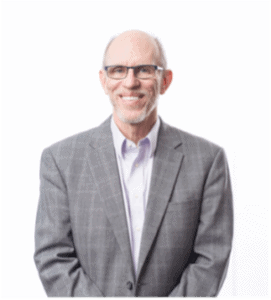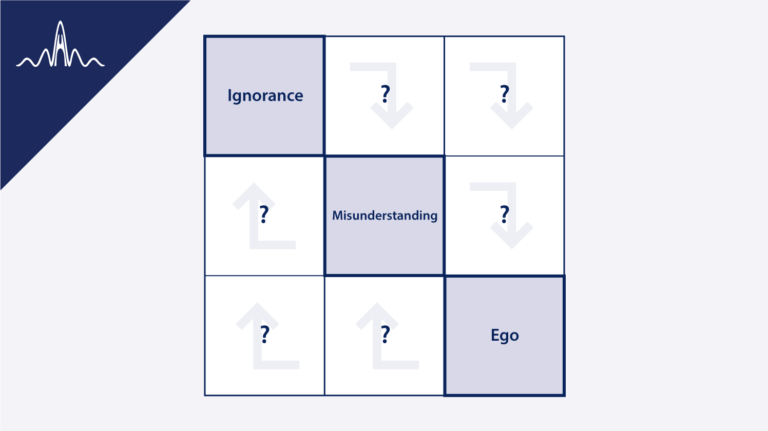Abstract
Within INCOSE we tend to focus our energy primarily around the tools, methods and practices that define our elegant engineering art. That emphasis on the “elements” and “connections” within Systems Engineering (SE) makes perfect sense for those who operate primarily inside the profession but can easily hide a much larger awareness of the “emergent properties” that even the most rudimentary functioning system of SE offers the world.
The logic (and to an increasing extent the model-based methods) embedded in SE are well matched to the dynamic system called reality around us, and thus enable the possibility of routinely manageable invention-on-demand. The logic remains valid from the simplest to most complex systems and is arguably most valuable not at its extreme upper limit but rather in aggregate at the threshold of enabling a result that was not previously obtainable for a given individual or team. Thanks to almost limitless technology, our ability to convert imagination into reality has never been easier, nor available to so many people.
That combination of attributes, in the hands of visionary leadership, is a virtual license to print money. Whether you lead the product development team of a major corporation or are an average individual with a dream anywhere on the planet, SE has something powerful to offer you. The world is filled with marginal systems just waiting for something a little better to arrive.
Given that every market force would favor adopting SE as quickly as possible, why do so many leaders stubbornly ignore this opportunity? The scrutiny placed on financial measures of success, particularly the ability to generate profit, would certainly seem to favor giving SE a try.
Fads get funded and followed with religious zeal – until the next one. Since fads are at best incomplete and at worst incompetent, they inevitably solve some problems but introduce others – which in due time become what the next fad fixes. Tooling for innovation is at least as valuable as tooling for production – why not just invest in an engineering competency that is fundamentally aligned with reality and then continuously improve your abilities?
At the 2022 INCOSE International Symposium (IS) it was my privilege to share a presentation titled “What Force is More Powerful than Profit” exploring this fascinating and perhaps existential question for SE. This article builds on that foundation, starting with the reality of SE’s value, then identifying key barriers and sharing ideas for overcoming them, and finally concludes with a request to help the SE community at large by participating in a short survey of the barriers that you encounter in your unique environment.
We’ll also host a conversation on LinkedIn and welcome your thoughts and experiences. The findings from the poll, along with key discussion insights, will be shared in a follow-up article later this year.
Introduction
What are the real Barriers to SE?
The story is not about somehow proving that SE is valuable, but rather exploring why such undeniable value has gone unnoticed by those who otherwise embrace, often irrationally, the slightest promise of advantage in finance, production or business operations. Further, the barriers that prevent awareness have held firm, despite an evolving series of tools, messages, and outreach efforts.
The nature of those barriers has fascinated me for decades.
What I first naively thought of as discrete gaps in understanding, simply needing to be bridged, could often be better visualized as intentional layers of high-voltage insulation. It wasn’t just a lack of curiosity about SE, for an important subset of leaders there was purposeful opposition to even consideration of SE.
The underlying reaction was not “let’s hear what they have to say” it was “to arms and repel boarders.”
Every benefit I offered was met by an equal but opposite rationalization of why they either didn’t need that benefit or assurances it was impossible to use SE in their organization / market / region and so on. Mythology is filled with examples of such epic struggles, none seemed a model I wished to emulate, so I simply cut my losses and moved on. The open market offers the luxury to decline impossible clients, but escape is much more difficult when you are chained to your opponent by contract or employment agreement.
These are dynamic barriers, triggered and sustained by system forces within the world of the decision makers we seek to reach. Any rational message of benefit is doomed when interacting with a clearly irrational system of values. A small number of irrational participants can easily make it impossible to reach and help the rational subset of the organization.
The barriers look different in different SE application contexts of course, but the freedom to act based on self-interest in the commercial product development sector offers a great place for us to start. This sector is free to apply or ignore SE, and the choices that they make absent policy or customer direction are quite revealing.
How Our Messaging Impacts Barriers
As a Senior Systems Engineer, and later a Vice President, at an award-winning product development firm called “bb7,” I used SE constantly, but invisibly, not just as an engineering tool, but to also define market opportunities, capture strong IP, craft proposal strategy, establish effective teams and organizational structures, and essentially look into the future in ways our clients and competitors simply could not.
I made the “beneficial emergent properties of applying SE” visible in the primary value structure that our clients actually cared about – profit – and downplayed our activities as “common sense and
experience.” The reason was simple. When phrased as “common sense and experience” they felt included and knew how to take credit internally, whereas “SE” was something scary to avoid since it might point to us as the savior and them as the problem.
You could brand what we did “Aardvark” and it would have turned out exactly the same. The logic, not the nomenclature, determined the results. We used SE to engineer not only products, but entire market systems on behalf of our clients, and in turn made many of them heroes within their own organization.
None of that would have been possible had I insisted on calling what we did Systems Engineering instead of just doing it and handing them the result. Instead of SE, it was Marketing that got credit in many organizations, New Product Development in others, even Quality and Project Management were selectively praised for how well “that one went compared to how things usually go around here.”
The challenge of willful ignorance
Only the tiniest handful of clients wanted to know how such a small company could efficiently conduct hundreds of development projects a year across a wide variety of industries and product types – and somehow consistently deliver results their vaunted corporate teams had not even imagined possible. One Golden Egg in hand, they went off happily down their path to market.
The nature of that willful ignorance has fascinated me, in large part because of the enormous opportunity cost that arises. The answer turned out to be very surprising.
When I looked at a client’s market, through the eyes of a confident SE practitioner operating under deep cover, it was always possible to see a direct path to a system of evolved product solutions, not just the launch product they had in hand at the moment. (A background in SE and life cycle cost estimating gives one a very good framework for understanding the full magnitude of loss that passing up a dominant market entrance represents.)
When they looked at their market, through the lens of an organization that consistently failed on 80-90% of the development efforts they launched, the idea of having one “safe” project in hand was infinitely more appealing than the idea of gambling against bad odds for more.
What I saw as a license to print money and dominate market share looked to them like a solo game of Russian Roulette.
Further, a surprising percentage of leaders had gained their roles based on a single good idea that somehow made it to market – like winning a lottery ticket – and were terrified of backing something that might diminish that (perhaps undeserved) legacy. Once again, the ability to imagine making things better as a result of applying SE was absent, instead they saw it as us getting lucky and them being able to benefit from the happy accident.
Decades before bb7, I worked at Martin-Marietta Denver Aerospace where I once made the observation during lunch that “Gee, Martin-Marietta Orlando is really good at production, Denver Aero is really good at development, maybe we should figure out some way to mix the best of the two.” The reaction to my thoughtful gift of opportunity was one best described as sheer horror – “Don’t even think about it, we’d kill both organizations within a year!”
Looking through the lens of possibility, we were passing up a logical improvement to overall enterprise effectiveness / efficiency. Through the lens of painful experience, it was far easier to imagine how things could end up infinitely worse. The conclusion based on lack of confidence was that we would endanger the entire organization rather than help it in any way.
Opportunity cost is only a motivator if you see opportunity as something that is likely to go well versus randomly blow up in your face. Regardless of the market, I found that an equilibrium between
opportunity and risk had been established, with the fulcrum of that balance-beam being the degree of confidence that things can actually get better.
In less technical terms, our market doesn’t trust us, because they don’t trust themselves.
The Value is Real, Undeniable, and Extraordinary
Humans exist as biological systems, live in a complex system, depend on complex systems for every aspect of our ongoing existence, and thrive or suffer in our environment based on system relationships. These relationships are as invisible as radio waves to the vast majority of people living on the planet – but they are everywhere, all the time, unseen but essential, and impossible to prove without instrumentation.
The wisdom of acquiring some capacity to understand and manage system relationships becomes self-evident the moment you first glimpse and accept the overwhelmingly system-dominated nature of reality. Before that moment you can make all the scary stuff go away simply by not looking at it; after, you’ll never again feel completely comfortable.
Like acquiring object permanence as a child, the first true discovery of system relationships fundamentally and irreversibly transforms our relationship with the world around us. Until you believe in radio waves they aren’t real – to you – and your cell phone is magic.
That distinction reveals SE’s critical dependence on some level of system awareness in the mind of the person we seek to engage. Only the system-literate can understand our message of emergent benefit – everyone else just hears cost and complexity.
Our value may be invisible until a developmental threshold is reached in the mind of the person we are seeking to help, but the existence of SE’s potential value remains as certain and fundamental as electromagnetic energy.
A 200-year explosion of worldwide system complexity has created an immense concentration of opportunity. Civilization is now burdened with a mountain of unmet system needs waiting to be discovered and served through some form of SE. In addition to that “order backlog” there are an almost unimaginable number of emerging opportunities to do systems just a little bit better.
The wonderful thing about mining “system-gold” is that the mountain is not only immense and full of gold; that mountain creates new gold faster than humans could ever hope to mine it. Because that sounds unbelievable, people will continue to choose not to believe it – until someone discovers they can get rich.
Because so few people alive today know what “system-gold” looks like, most of that opportunity for improvement is sitting in plain sight and available for average individuals as well as organizations to pursue. The first few prospectors to ride out on a burro and fly back in a private jet will draw attention to the opportunity, and there is an almost unlimited amount of gold in the mountain waiting to be converted into fortunes that create even more attention.
We don’t need to sell SE, we just need to poke a few holes in the barriers that prevent recognition of opportunity and let the power of market-driven capitalism do the rest.
So Why Don’t Leaders Embrace, or at Least Explore, SE?
Ignorance
The most commonly cited, and certainly valid, barrier to beneficially applying SE is learning that SE even exists and is an option to consider. Awareness is certainly an essential step, but it’s relatively easy to trigger awareness in those who are already system-literate.
As a community of engineers and seasoned project participants we have a very high percentage of system-literate members, many of whom are now pretty good at educating each other about the value and potential of SE:
- INCOSE serves as a strong advocate for SE education.
- Universities now offer SE curricula for those just entering the workforce.
- Companies like PPI have delivered training to tens of thousands worldwide, broadening and enriching careers already underway.
- Most SE teams that work in organizations have embedded training and mentoring programs – often motivated and run by senior practitioners.
We love ignorance, because it offers a blank canvas onto which reality can be drawn. Starting from a blank canvas does present challenges though, in particular for those that have not yet reached the maturity point where systems are “real” and must be respected.
Until this essential magic of systems is realized, it will be impossible to communicate the potential of unexpectedly strong benefits. Because only awareness of system benefit creates the motivation to invest time in learning SE, this is a critical development threshold that we must enable in order to have any hope of building professional SE skills.
Seasoned SE practitioners view system-literacy as necessary, but not by itself sufficient, and thus tend to diminish the importance of this epiphany moment. If we think back carefully, though, we can recall the points at which our awareness of the world fundamentally changed. Most of these moments were created not by a learning event, but by participating in life itself.
Where we struggle today against the barrier of ignorance is at this threshold – migrating people from a simple, apparently safe but fundamentally flawed viewpoint, to one that is rich with opportunity but far more demanding and uncomfortable to hold.
We know the prize that awaits, so as “parents of the profession” we encourage others to grow up quickly. Because those we are trying to help know the pleasures of irresponsibility but have not (yet) suffered as a direct result (at least that they will openly acknowledge) we often end up dealing with the equivalent of teenagers who think they are immortal and that risk only applies to other people.
In addition to offering “teenagers” a model that works but requires discipline, we face another challenge in dealing with this group. Any status quo favors some at the expense of others, and not everyone wants people to know that the Earth orbits the Sun – especially those whose income and status depends on claiming the opposite.
We thus face a marginally motivated and highly conflicted general audience, people who don’t yet share our understanding of systems, and it should be no surprise we have been far less effective here than with those that are “like us” in fundamental ways. Our current applications for professional learning run just fine, but only on a system-literate operating system, and those compatible OS represent at most a percent or two of total market share.
It is this threshold, reducing ignorance surrounding the very existence of systems, that has the potential to enlarge our community from tens of thousands to tens of millions.
We are focused on creating a small pool of very skilled SE practitioners. That is a noble goal, but unless that core is eventually connected to the larger world by people with awareness of value it will come to very little. That next layer of enabling connections has very different learning needs compared with the core SE community, a much different starting point, and very different motivations regarding personal benefit and risk.
Acquiring object permanence isn’t something we go to school to learn – there is no textbook or podcast that “teaches you” that objects remain real even when you aren’t looking at them. This an internal transformation – invisible at the level of actual change mechanics – that happens when the preponderance of evidence and experience ultimately forces us to adopt a different view of our world.
Our best classroom for this aspect of learning is the real world – helping people to interpret their own rich life experience in system terms, and thus unlocking the transformation to system-literacy. It doesn’t matter what system they first see, as long as elements are connected in ways that trigger emergent properties it is as pure a system as any other for learning purposes.
It is important to realize that this is almost the inverse of how we typically teach SE to new users, where our focus on execution details presumes our audience is already system-literate. Those who are system-literate are ready thrive, those who are not are frustrated and become advocates against, rather than for, our profession.
We also need to discuss the difference between innocent ignorance – simply not yet knowing something – versus willful ignorance where some need is being met only as a result of denying truth. Willful ignorance is a form of ego-driven misunderstanding and not correctable through the methods that work well otherwise.
There is also a major difference between teaching a lot to a few so that they can perform well and correct problems, versus teaching a little too many so that they no longer create an endless pipeline of dysfunction that needs to be cleaned up. We are good at helping people who want to do better, but nowhere near as good at intervening with the people who are currently causing most of the problems.
Phrased in medical terms, we still treat education as a remedy rather than a prophylactic.
Misunderstanding
Misunderstanding is a canvas that already has something on it, but in the wrong places or colors for the image we are trying to create. The war-of-silos in most organizations results in many small canvases rather than one large one, so in addition to misunderstanding of contents we also face misunderstanding of the connections between those misunderstood contents.
Unlike the blank canvas of ignorance, this one has emotional attachment to whatever is drawn upon it. Those markings were often created by, and remain linked to, competing brands of methods and policy. These are in effect territorial maps of what each silo controls (or wishes to control) and function in a loose feudal structure. Each is thus locked into a larger system of misunderstanding, even if they themselves wish to become enlightened.
We seek to disrupt that equilibrium, and thus clear potential for conflict arises.
Misunderstanding creates its own parallel system of vested interests, rationalizations, and self-preservation needs. The more flawed the level of understanding, the greater the arsenal of secondary compensating and defensive mechanisms you are likely to face.
There is also fear that, if your method is as good as you say it is, what they’ve always done before will suddenly look really bad.
How do you explain that all it took to finally improve market share was simply to ask the market what it wanted and make sure your product has those attributes? Likewise, try explaining why you are only now writing down fuzzy goals as clear requirements for the first time, or actually verifying that what you planned took place as intended.
All of these improvement actions will seem absolutely obvious in hindsight. How do you answer the dreaded question “Why didn’t you think of that?”
Perhaps the biggest reason for the ongoing success of fads is that a new buzzword lets everyone pretend that the underlying principles are new and thus get a pass on having abdicated their responsibility to discover and apply them decades ago. Talking to your stakeholders was a good idea long before “Voice of the Customer” became a best-seller.
The key is that misunderstanding always comes with a secondary system of rationalizations and enabling infrastructure. Against such carefully prepared defenses, our message is very unlikely to prevail. The secret to defeating any fixed defense is simply to go over or around the barriers and thus make them irrelevant. If you lack that ability, not engaging at all is the smarter choice.
You cannot cure misunderstanding until there is a basis for understanding – it is pointless to argue with a 2-year-old, instead you must wait until a moment arrives in their world that you can then seize upon as an illustration. We can create environments that increase the odds of such experiences, and help people draw as much from their epiphany as possible, but we do not have the ability to reach into other people’s minds and create this transformation.
Ego
We have now moved from a canvas to a mirror. The owner not only considers what they see on it as a work of art, they identify with it personally.
Worse, that mirror reflects only certain wavelengths of light – the only colors that matter are the ones that reflect and then reach the eyes of people they are trying to impress. All other wavelengths are absorbed and produce heat in the form of anger / frustration / resentment.
Ego must be treated as an addiction rather than a learning opportunity.
You will face an entire system of defenses and enablers, and the strongest possible opposing WIIFM – a sense that if you win, they die. An addict’s energy is devoted to maintaining and defending the addiction, not recovering from it.
The model we can learn from is one of de-tox and remission versus cure – relapse is easy and common. Until the fear that drives inflated ego is addressed, the best you can hope for is to move the symptoms into less harmful patterns.
It is far easier to substitute another, hopefully less harmful, drug than withdraw them completely. Once again we see the mechanism that supports empty fads over genuine learning and transformation. Each fad feeds the addiction, and by promising that the next “hit” will finally do the trick as they enable migration from one dependency to the next.
By contrast, we are offering a life of discipline and sacrifice. That’s hard to pitch until the person you want to help hits rock-bottom. You have undoubtably noticed that people take SE a lot more seriously once something terrible happens, and that those moments represent unique opportunities for our community to be fully valued.
Never waste a good crisis, it can offer an essential moment when ego is less important than survival and change finally becomes possible!
What We Can Do?
Pitch Benefits
No one sells cell phones by requiring their customers to get a degree in RF engineering. Instead, a few people apply that essential skill to create a marketable commodity that is recognizable to billions of buyers. What the phone does for people’s lives is valued, but the RF engineering that made it possible is invisible at that level.
SE is not valuable because it is SE or that we like it. SE is valuable because of the beneficial impact on other systems that emerges when using these methods as a system. My experience with bb7 validated the ability to easily sell SE benefits, and the pitfalls of describing only the methods and
hoping others are sophisticated enough to make the connection.
There is wisdom in the saying “Once you can tell the difference between good advice and bad advice, you no longer need advice.” The takeaway isn’t that you’ll no longer need advice at some point, it’s that during the period when you most need assistance you’ll be unable to know whether or not the guidance is sound. It is easier to trust a story of benefits than one that talks about only the actions.
Speak Investment
At the top of every commercial sector Vee Diagram you’ll find only money. For the most serious investors, making anything other than return on investment is a nuisance.
It doesn’t matter what they make and sell, as long as the emergent property of profit meets expectations. Small wonder that financial instruments – the direct creation of money from money – are considered an ideal investment compared with the messy and uncertain business of creating products whose inherent value must be converted into cash.
Designing cell phones, running theme parks, manufacturing cars, providing health care, and countless other businesses all exist at the very top solely as a means by which the desired emergent property of profit can be acquired. Proclaimed loyalty to market, mission, and people vanishes the second that the money machine is perceived to be at risk.
That ruthless survival instinct can be aligned with doing the right thing – but only as long as the doing the right thing makes them more money. The incredible potential benefit of SE in profit terms thus opens the door to the potential benefit of SE for overall societal efficiency.
Target Entrepreneurs
Entrepreneurs are the prospectors in our system gold-rush model. They are willing to look in places others have called worthless, and to be alert to a flash of color others would miss. They may not be geologists, but they know gold only moves downward, and thus they explore uphill until the gold stops. Somewhere in between is a fortune waiting to be claimed.
These people are the decision makers, and even more importantly they are the direct beneficiary of those decisions. Yes, some are infantile tyrants, but at least that concentration of power eliminates the dysfunction of competing political agendas so common in traditional organizations.
Entrepreneurs are willing to fail as a tool for learning – that in itself is a system and emergent property example we can build upon. The idea that I will try something three different ways and fail each time is normally considered a bad thing. Unless you see the overall value arising from experience and iteration, the set of failures and associated emergent property of foundational insight is never recognized. To the narrow, non-systemic view of most corporate measurement systems it simply looks like three strikes and you’re out.
Entrepreneurs are great at leveraging the skills of others, in effect focusing on the emergent properties any way they can get them and largely outsourcing the element and connection level detail. They are system integrators at heart, building only connections and remaining largely agnostic to the origin of the elements.
Entrepreneurs also embrace another form of leveraging the skills of others – they shamelessly copy any viable model they can find and then try to out-promote or out-execute everyone else. This makes them ideal for accelerating the discovery of SE as a tool for increasing return on investment, but also as an innovation laboratory for broadening the different ways that the logic of SE can be brought into practice.
About The Survey
All SE’s have a common interest in modeling the barriers and devising ways to bridge them. Crowd sourcing awareness is a logical way to build a clearer view of the challenge and help the community respond. Since we’ve hopefully opened your eyes to types of barriers you didn’t see as clearly before, this is an ideal time for you to share that clarity with others.
The first three questions you’ll encounter on the survey ask about the three primary barriers we’ve shared: Ignorance, Misunderstanding, and Ego. You’ll be asked how strongly you feel each barrier blocks SE in your environment. We’ll capture data using a numeric score of 1-5 and provide an opportunity to share examples that come to mind. This part is pretty easy, and you likely already have examples or opinions in mind by now.
Being systems engineers, we understand that those elements are very unlikely to exist in isolation from each other and are far more likely to act as a system of barriers. We therefore also ask about each possible element to element relationship.
Starting with “How strongly does Ignorance drive Misunderstanding?” we ask six additional questions that enable us to gather the information needed to populate a full n-squared diagram of these relationships. This is much harder than simply looking at the obvious elements, but even a modest attempt quickly reveals that the barriers we see are actually the emergent property of a dynamic, self-sustaining, system of barriers that we face.
Finally, being not just systems engineers, but seasoned systems engineers, we’ll ask an open-ended question: “What else acts as a barrier to embracing SE?”
These ten questions, three on the obvious defined barriers, six that capture relationships, and one to capture emergent properties, offer an extremely efficient way to better describe a surprisingly complex system.
Here’s where you can find the survey: https://www.surveymonkey.com/r/T7WPR2L
Don’t worry, it’s short so it won’t take much time, and we promise not to spam you with unwanted messages.
Given that the question – What keeps people from embracing SE the way we do? – is critical to everyone engaged in SE, we’d like to enable ongoing conversation on this important topic. For that reason we’ve also launched a discussion area here on LinkedIn.
There we will periodically share results during the 90-day survey period and join in what we hope will be a lively conversation. Even if you don’t think you have something to add, stop by and see what others have to say. The more people that participate, the more valuable the discussion will be for the community, but also the greater the personal validation of realizing that you were right all along, and that others face the same challenges for the same fundamental reasons.
Conclusion
The world around us is in transition from an era in which managing elements was sufficient, to one where only systems literacy and control will be successful. Like all transitions, this one has links to both the past and future systems, as well as a transient system emerging at the event-horizon where the two fundamentally conflict.
What looks to us like a tool for engineering is certainly that – a superior model for confidently creating and managing systems – and SE would be absolutely worthy of our passion if that were the only prize. Not as obvious, but far more important for everyone on the planet, is that every activity – not just engineering – needs to undergo the same transformation from fantasy to reality-based expression.
Until you understand systems, emergent properties are seen as directly controllable and also the exclusive point where innovation should be applied. Both are profound and enormously self-limiting errors, not only for individuals but also civilizations:
- Society will continue to fail at providing essential services such as health care, energy policy, sustainable resources – even maintaining basic social order – so long as the importance of managing the elements and connections that give rise to those desired emergent properties goes unrecognized.
- All of us – society’s stakeholders – will fail to hold our representatives and suppliers responsible for making necessary changes. Demanding “change” is pointless, we should be demanding competence and responsibility instead.
- We will attack the symptoms rather than the root cause of problems and remain much more likely to make things worse rather than a little better. The time lag between recognition and response guarantees a period of dysfunction, and in many cases that lag is so large that it makes closed-loop control impossible.
- We will remain vulnerable to exploitation by those who specialize in breaking weak systems for personal benefit – from common criminals to so-called world leaders – and powerless to respond. The safeguards and checks on power that our ancestors fought to introduce will be removed, and their wisdom and sacrifice wasted.
- We will propose grand solutions with no concept of what is needed to create and sustain them, nor even how to judge which proposals are “best.” A room full of kids arguing about why their crayon drawing of a car is perfect does not produce an actual working car, nor does it guide logical investment in technologies or systems that would eventually make some version of vehicle possible. It instead becomes a popularity contest that penalizes rather than rewards rational thinking.
The irony of being human is that none of those important observations has anywhere near the motivating power that greed does. Everything in the list above requires a system perspective to appreciate, and in many cases requires a degree of individual sacrifice on behalf of the greater good.
Greed is the inverse of that and says that systems matters only in terms of what they can do for me, right now. Greed is scored in power and money, with money being the easiest metric for the insecure to pursue and rank. Greed and ego are tightly intertwined.
Greed is a powerful and often negative force, but it’s also a force that is sufficiently predictable that it can be harnessed for doing good.
Greed, like gravity, will be there regardless of organizational structure, political party, or world governance view. Greed is described and discussed as far back as human records go, and every bit of that accumulated insight remains valuable today. And even more practically, future-greed is the only available force with sufficient power to potentially overcome current-greed at societal scale.
SE works because it is fundamentally aligned to reality, managing the elements and connections that give rise to the emergent system properties we seek. That in turn, opens up opportunities not otherwise available, not just in our core benefit story of engineering systems more effectively, but in the much more widely recognizable language of easy money that only an idiot would pass up.
Who but systems engineers would recognize that the literal inverse of a system perspective – greed – might ultimately become the driving force unlocking a better and more system-literate world?
About the Author

Mr. Iliff has over 45 years of PM and SE experience on developmental efforts ranging in size from a few thousand to billions of dollars and has built a solid record of disruptive innovation in aerospace, medical, commercial and consumer markets.
Randy is a charter member of INCOSE and has been a steady contributor ever since. He works with Project Performance International as a Course Presenter / Principal Consultant and is also founder of his own consulting company – Eclectic Intellect.
Prior to that he was Vice President at the award-winning product development firm bb7, served as Systems Engineering Manager for IceCube, an Engineering Manager at Motorola Government Electronics Group, a Program Manager / Senior Systems Engineer at Martin Marietta Denver Aerospace, and a junior member of the “skunkworks” Advanced Development Group at McDonnell-Douglas Astronautics.
Mr. Iliff holds a BS in Engineering / Industrial Design from Michigan State University, and an MS in Systems Management, Research and Development from the University of Southern California.







